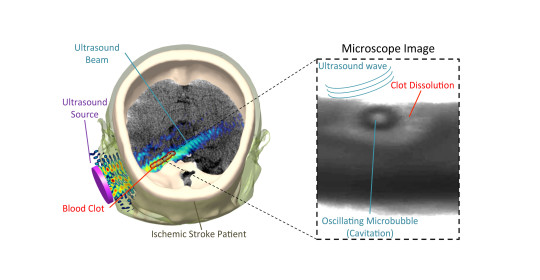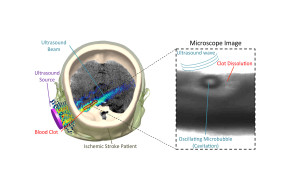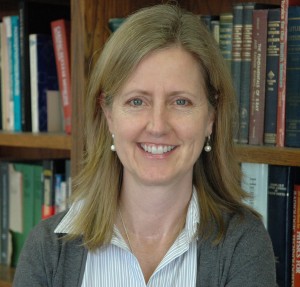
Ultrasound-Mediated Thrombolysis May Offer Promise
The standard of care paradigm has shifted in the treatment of ischemic stroke. At present, the only thrombolytic therapy approved by the U.S. Food and Drug Administration is recombinant tissue-type plasminogen activator (rt-PA), and this treatment is only administered to a small percentage of patients due to safety concerns and temporal limitations.1 Sonothrombolysis, or ultrasound-mediated thrombolysis, is currently being tested in phase III clinical trials, and could be approved for use in two to three years. This follows more than 15 years of preliminary research and trials on a concept first developed (and later patented) by Christy K. Holland, PhD, director of research at the University of Cincinnati Heart, Lung, and Vascular Institute.
Recently, Holland contributed to a paper on the mechanisms behind enhanced thrombolysis with ultrasound published in Ultrasound in Medicine and Biology, which detailed how transcranial ultrasound-assisted thrombolysis combines administration of an rt-PA with ultrasound technology, as the brain is bathed in low-level ultrasound waves which help rt-PA work more effectively.1 Enhancement of thrombolysis is thought to be primarily mechanical in nature.1 Absorption of the ultrasonic energy generates bubble activity and associated acoustic microstreaming that increases penetration of rt-PA into the clot; alternatively, radiation force displaces the clot.1 The nucleation and generation of bubble activity by an acoustic source, known as acoustic cavitation, has been shown to enhance thrombolytic efficacy.1
Reprinted with Permission
 As a result of her research, Dr. Holland has gained regional, national, and international recognition for her contributions to ultrasound research. She began investigating the possibility of ultrasound-mediated rt-PA therapy in 1999 as a way to expand on the available stroke treatments. The usage of rt-PA had significant limitations, both depending on time (the efficacy window is just six hours) and the location of the clot (those originating in the heart are more difficult to treat). Clearly, improved options were needed, and Holland responded by intensifying her scientific exploration into the combination of ultrasound technology and the then-standard rt-PA medications.
As a result of her research, Dr. Holland has gained regional, national, and international recognition for her contributions to ultrasound research. She began investigating the possibility of ultrasound-mediated rt-PA therapy in 1999 as a way to expand on the available stroke treatments. The usage of rt-PA had significant limitations, both depending on time (the efficacy window is just six hours) and the location of the clot (those originating in the heart are more difficult to treat). Clearly, improved options were needed, and Holland responded by intensifying her scientific exploration into the combination of ultrasound technology and the then-standard rt-PA medications.
Recent years have seen a growing number of researchers investigating sonothrombolysis and its many potential uses, however, the field remains open for further discovery. Future clinical applications could include any part of the body in which blood clots may form, such as the heart and the lower extremities; ocular applications have even been posited. As for Holland, she concludes, “My goal is simple. I hope to help prevent the devastating sequelae of stroke.”
Reference: 1. Bader KB, Gruber MJ, and Holland CK. Shaken and Stirred: Mechanisms of Ultrasound-Enhanced Thrombolysis. Ultrasound in Med. & Biol., 2015. 41;1:187–196.
 Christy K. Holland, PhD
Christy K. Holland, PhD
Professor, Internal Medicine, Division of Cardiovascular Health and Disease and Biomedical Engineering Program
Director of Research, UC Heart, Lung, and Vascular Institute
513.558.5675
hollanck@ucmail.uc.edu

